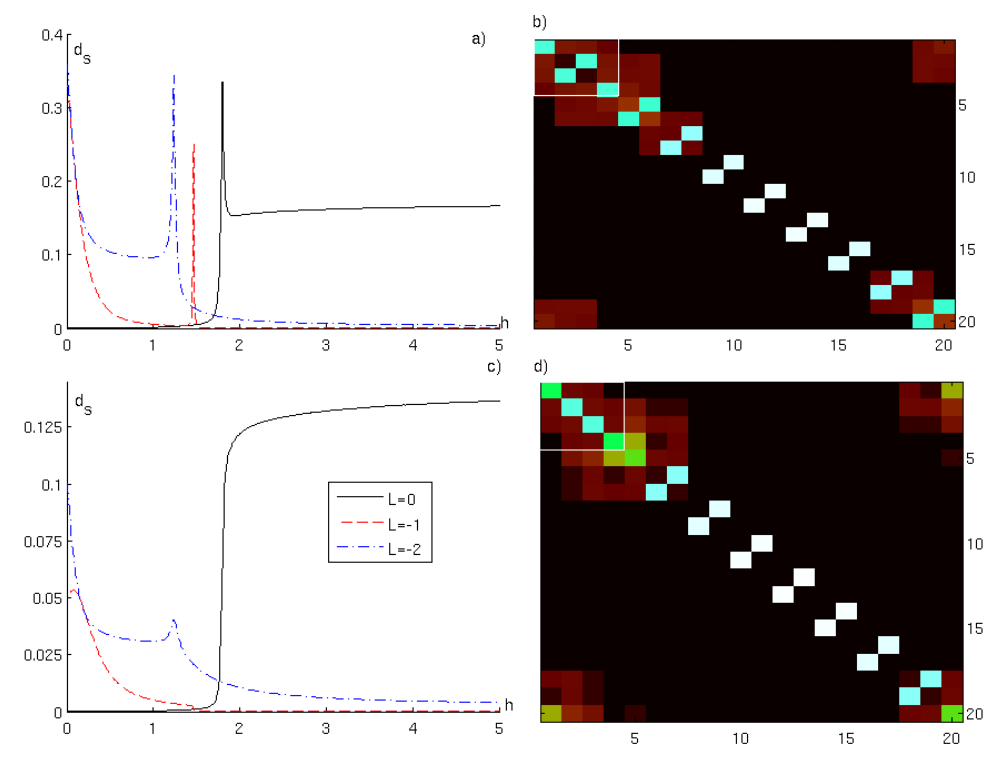Explanation of Image:
return to main page
The image shown on the main page is from the paper
Propagation of Disturbances in Degenerate Quantum Systems,
it demonstrates that by placing a local magnetic field on a periodic
J1-J2 Heisenberg spin chain at the Majumdar-Ghosh point (J2=.5*J1) a
disturbance can be sent throughout the entire chain by changing the size
of the boundary between the spins in the field and those not in the
field. With no field applied the ground-state is degenerate, and
the ground-state manifold is the manifold spanned by the two ways the
system can be covered by singlets.
The figure at the top right shows a map of the two-point entanglement
of the system (brighter is more entanglement, darker is less) at a
lower field value, in this picture one can see that the two-point
entanglement of the spins within the field is still very much like a
singlet, and that there is a boundary between the field and non-field
are roughly for spins long (white square shows where the field is
applied). The figure at the bottom right shows the two-point
entanglement of the system at a higher field, where you can see that
all traces of a singlet have been destroyed within the section of the
chain where the field is applied, and the boundary between the field
and non-field region is roughly 3 spins long. Notice that the singlet
covering switches for the spins far from the local field, this means
that in a process connecting these two regions of phase space a
disturbance has been sent throughout the system.
The 2 figures on the right show trace distances for the ground state of
different total spin sectors. The top right figure shows trace distance
from the nearest singlet covering for the 2 furthest spins from the
field. The bottom right figure shows instead the trace distance from
the nearest state in the entire ground state manifold. These plots
clearly show abrupt transitions in the singlet covering. Note that at
zero field the L=0 sector contains the global ground state, but this
switches by a true crossing in such a way that the global ground state
far from the field spins always is very close to one of the singlet
coverings.

